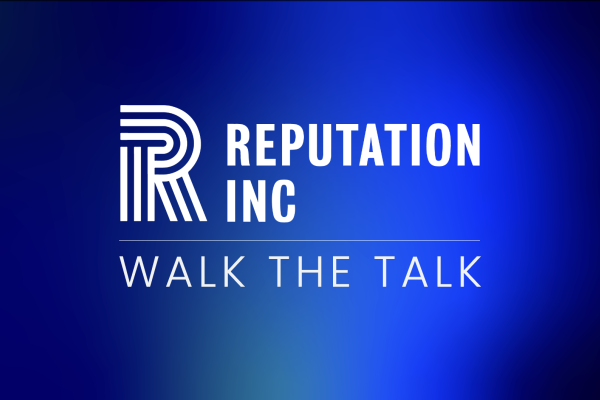
Sustainability is a leadership challenge
Anyone who regularly attends sustainability events and conferences will recognise this situation.
At the end of the keynote, hands raise for the Q&A, and here comes the question: "how do I get buy-in from the leadership team?"
Those who ask it tend to fall into one of these two categories:
- The lucky few, whose CEO is evangelical about sustainability, but are concerned about getting the next layer of company leaders on board
- The majority, trying to get sustainability on the CEO and board agenda in a meaningful way-
These concerns are voiced in the privacy of Chatham House rule events, networking conversations and business meetings, not on the glossy pages of sustainability reports.

On paper, everyone is on board.
The climate crisis is here, and we only have about 10 years to avoid a global disaster. We have a moral duty to act, for the next generation and our own. We know that consumers, employees and investors care about sustainability, and won't buy from, work for, or invest in a company that harms the environment. In short, sustainability makes good business sense.
But few business leaders can be heard saying that, to keep our planet cool and clean, their company will have to be very different, very soon.
Sustainability is the biggest change programme that ever was.
In the next 10 years:
- Radical innovations will have to be developed and scaled-up (e.g. biodegradable packaging, smart energy storage).
- Business models will have to shift (e.g. from selling to leasing).
- Commercial strategies will have to change (e.g. giving up low-cost, high-volume strategies in favour of premiumisation).
In global companies, all of this will have to be underpinned by significant culture change: move fast, fail quick and often, or you will leave your field open for unicorns to graze on.
Leaders have to embrace and drive radical business transformation, starting today. This is a big ask.
Every business leader has to step up and become a sustainability leader. So what does a sustainability leader look like?
There are four keys to sustainability leadership, and each comes with a specific set of skills and competencies.
Vision
How to convincingly frame and articulate a direction of travel for your company into an unknown future? This starts from within. Define your own truth: what you are fighting for, what you want the future to be, the principles and values you'll never give up on. It sounds basic, but if your own personal compass is well adjusted, chances are, your company's will also be.
Imagination
Imagine the world in 2030 and beyond, and where your company could fit into it. To do this, you need access to the right sources of intelligence, and solicit external views to understand weak signals, emerging trends, risks and uncertainties in your field. Draw a picture of possible futures through what-if scenarios and understand how these might transform your business.

Ambition
Be a source of radical inspiration and ambition. Set goals that drive radical transformation, not incremental changes. This means your sustainability scorecard should be full of zero and 100% targets: zero-carbon, zero plastics, zero waste. 100% renewables, 100% recycling... Going all-in may paradoxically make the job easier, as Steve Howard from IKEA once pointed out: "If you have a 90 percent target, everyone in the business finds a reason to be in the 10 percent. When it's 100 percent, it's clear, and (..) you just get the job done."
Collaboration
Encourage a culture of innovation beyond the R&D department, let ideas emerge and flourish from the bottom up. Internally, foster effective cross-functional collaboration. Externally, engage stakeholders beyond your immediate friends, and actively listen to your challengers. Systemic change only happens when companies see themselves as a hub of relationships through which they can achieve common goals.
So, back to our orignal question: "how do I get buy-in from the leadership team?"
The answer is relatively simple: help them.
Help them shape a vision that they truly own.
Give them the tools to imagine tomorrow.
Give them confidence to be radically ambitious.
Give them the skills to meaningfully engage inside and outside the business.
Not everyone is born with these qualities, but everyone can learn. Ultimately, everyone has to.



